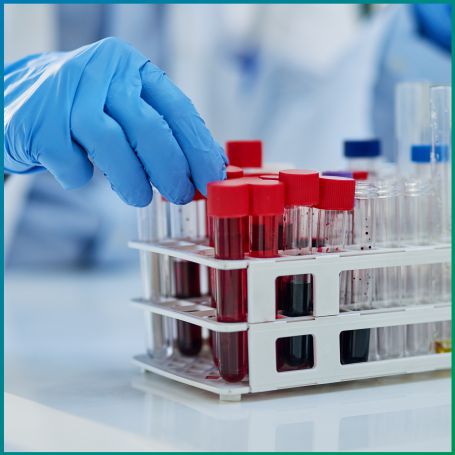
Epstein-Barr Virus (EBV) is a member of the herpesvirus family and is one of the most common viruses in humans.


It was first identified in 1964 and is primarily known for causing infectious mononucleosis, often referred to as "mono." EBV is also associated with several other diseases, including various cancers such as Hodgkin's lymphoma, Burkitt lymphoma, and nasopharyngeal carcinoma. The virus remains dormant in the body after initial infection and can reactivate later, leading to potential health complications.
Quantitative Polymerase Chain Reaction (qPCR) is a powerful laboratory technique used to detect and quantify the presence of specific DNA sequences in a sample. In the context of EBV, quantitative PCR can measure the viral load in a patient's blood or other bodily fluids. This is particularly important for monitoring patients with active EBV infections, as well as those undergoing treatment for EBV-associated malignancies.
1] Diagnosis of Active Infection: Quantitative PCR can help differentiate between active EBV infections and past infections. In cases of suspected infectious mononucleosis, qPCR can provide rapid and accurate results.
2] Monitoring Viral Load: In immunocompromised patients, such as those undergoing organ transplantation or chemotherapy, monitoring EBV levels is crucial. High viral loads can indicate reactivation, which may lead to severe complications like post-transplant lymphoproliferative disorder (PTLD).
3] Assessing Treatment Response: For patients with EBV-associated malignancies, qPCR can be used to monitor the effectiveness of treatment. A decrease in viral load following therapy may indicate a positive response.
4] Research Applications: Quantitative PCR is also used in research settings to explore the role of EBV in various diseases and to develop potential therapeutic strategies.
The normal range for Epstein-Barr Virus (EBV) Quantitative PCR can vary between laboratories, as different facilities may use different methodologies and standards. However, in general:
1] Negative Result: A viral load of less than 100 copies/mL is often considered negative or within the normal range for healthy individuals.
2] Low Viral Load: Levels between 100 and 1,000 copies/mL may suggest low-level infection or reactivation but typically do not indicate an active infection.
3] High Viral Load: Levels above 1,000 copies/mL may indicate active infection or significant reactivation, especially in immunocompromised patients.
At Diagnopein, we offer comprehensive, accurate, and timely diagnostic services, including the Epstein Barr Virus (EBV) Quantitative PCR test pune. With our NABL-accredited labs, cutting-edge technology, and skilled technicians, you can be assured of reliable results every time. Get your results quickly, especially when time is crucial in detecting severe infections.
Competitive pricing without compromising on quality. Our team of experienced professionals ensures the test is conducted smoothly with minimal discomfort. We provide not just the Epstein Barr Virus (EBV) Quantitative PCR test results but insights into your health condition, helping you and your doctor make informed decisions about treatment. For more information call us at +91 9204 108108.
Preparation may vary, but generally, you might be advised to fast for a few hours before blood collection. Always follow your healthcare provider’s instructions.
While there is no specific antiviral treatment for EBV, supportive care is often recommended. In cases of associated malignancies, targeted therapies may be necessary.
The test itself is minimally invasive and typically safe, but risks may be associated with the sample collection process, such as discomfort or bruising.
Common samples include blood, saliva, or tissue biopsies, depending on the clinical situation and the suspected condition.